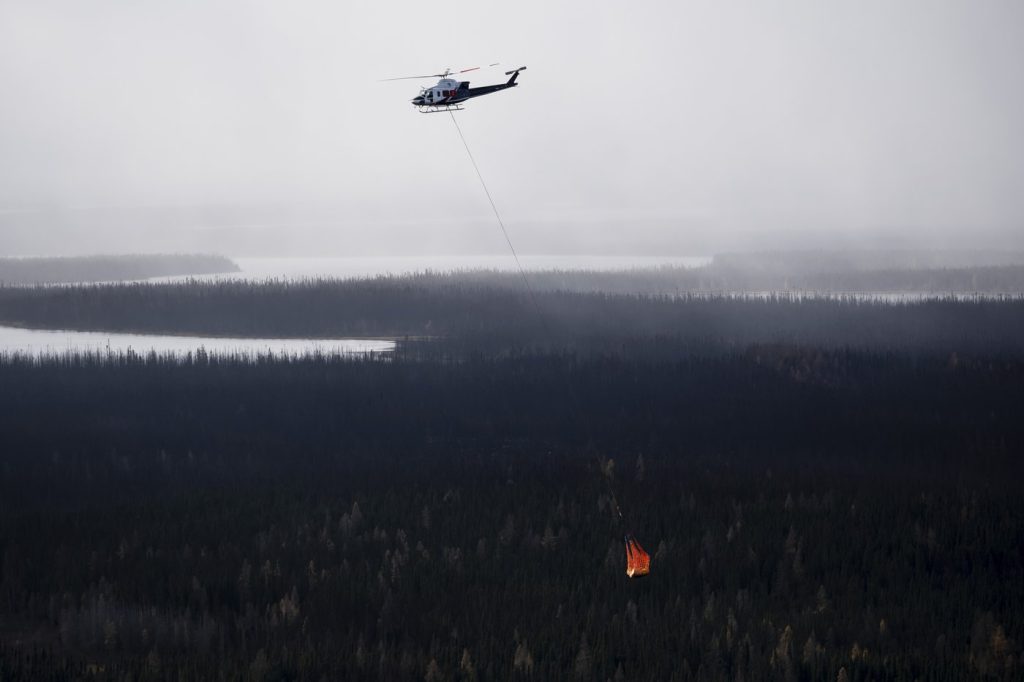GO Transit, UP Express slowly resume service after CN system failure

Posted October 3, 2023 1:26 pm.
Last Updated October 3, 2023 10:36 pm.
Commuters across the Greater Toronto Area (GTA) saw their afternoon rush-hour travel thrown into chaos Tuesday after a network-wide system failure at CN Rail halted all GO Transit trains, as well as a rail link to Toronto’s main airport.
At around 4:30 p.m. — three-and-a-half hours after the problems began — GO Transit said “limited service” from downtown Toronto’s Union Station was resuming, with outbound trains every 30 minutes.
“There is an ongoing CN networkwide system failure that is affecting all of our rail corridors. We are beginning to slowly resume service,” Metrolinx, which operates GO Transit, wrote in a statement.
“As we work with our rail partner on this issue and restore full service, there will be continued cancellations and potential delays this evening.”
CN Rail issued a statement late on Tuesday saying internet connectivity had been restored.
“During the outage, CN worked with GO to temporarily take over their train dispatching responsibilities. This allowed for the partial resumption of GO and VIA services,” wrote spokesperson Jonathan Abecassis.
“GO Transit has now resumed dispatching their lines and they are working to resume their normal movements. CN will be working with GO to review the incident and put in place processes to avoid further disruptions.”
CN Rail said its customer service portal and EDI system are currently operational. CN trains did not experience any major delays and no data was impacted.
“CN would like to apologize for the impact caused by this outage. While there continues to be no indication of a cyber security issue, the cause of the outage remains under investigation,” the statement read.
As we work with our rail partner to resume regular rail service tonight, we have modified the schedule and are running trains approximately every half hour. Further delays and modifications are expected. You can see Union Station departure info here: https://t.co/n8ELbTv4jf
— GO Transit (@GOtransit) October 4, 2023
A Metrolinx spokesperson said train service is continuing to recover with modifications and delays but that regular service should resume by Wednesday morning.
“[Wednesday], we intend to run our regularly scheduled train service, however, there could still be some delays and modifications as we work to move our trains and crews back into place after today’s CN outage,” Metrolinx said.
“We are committed to providing as much notice as possible to customers regarding any schedule changes but are encouraging all travellers to check our Service Updates page before heading out the door.”
At Toronto’s Union Station, display boards carried a uniform message in yellow font for virtually all service lines during the height of the outage: “Wait/Attendez.”
Metrolinx said the CN Rail system failure, which began around 1 p.m., had affected all its rail corridors.
GO trains were held for hours at their nearest station — GO Transit said the trains weren’t moving because signals could not be given to them.
Via Rail trains routed through Toronto’s Union Station were also affected, as was the UP Express, which connects the downtown core to Toronto Pearson International Airport.
The UP Express said late Tuesday afternoon that it had resumed limited service, with delays and cancellations expected. Via Rail said some passengers would “experience delays.”
CN Rail said late Tuesday afternoon that it was experiencing “an internet connectivity and electronic data interchange issue.”
The Montreal-based company apologized for the problem and said it was working to get all services up and running.
“While there is no indication of a cybersecurity issue, the cause of the outage is currently under investigation,” it wrote.
CN trains, EXO commuter trains in Montreal and Amtrak trains in the U.S. were all in operation, the rail operator said. CN’s website appeared to be offline for several hours Tuesday afternoon.
Two railway sources, who were not authorized to speak on the record, told The Canadian Press that after CN’s computerized signal system went down, a handful of rail traffic controllers were issuing orders by pen and paper that were then sent out to conductors via radio to move trains to stations or other safe areas of track, where they were halted.
With files from Lucas Casaletto of CityNews








